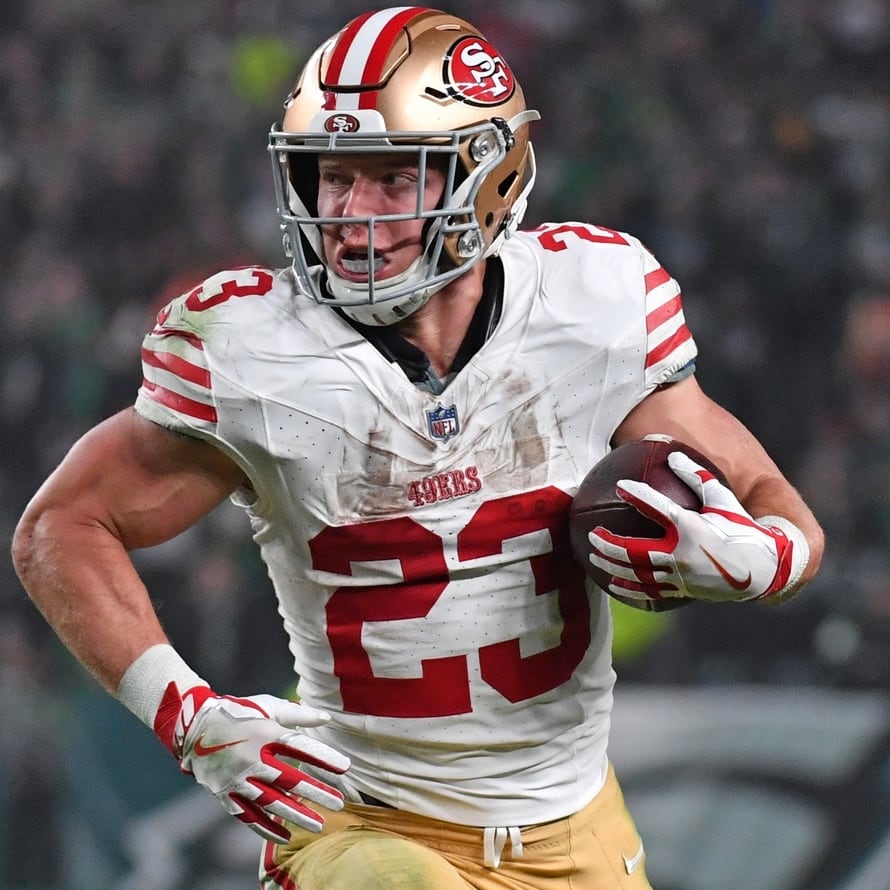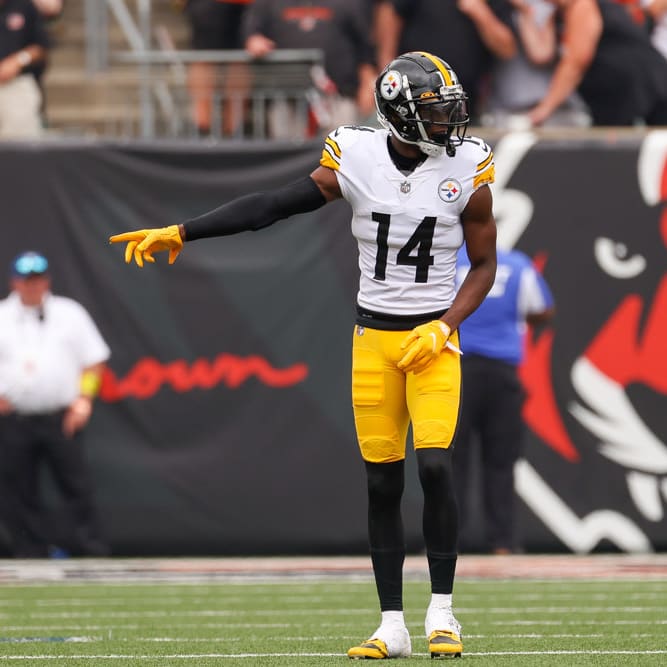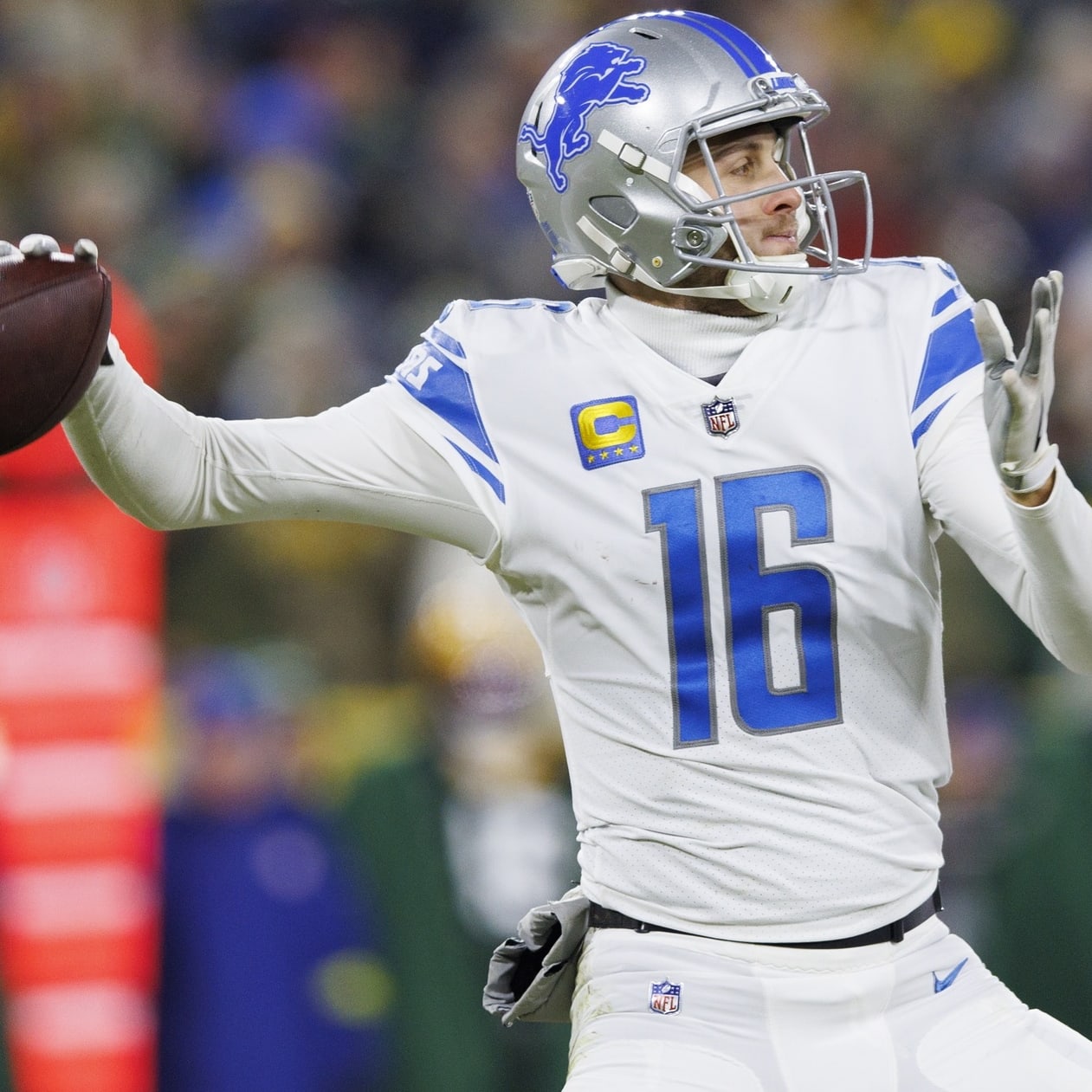This article is part of our Best Ball Strategy series.
In the next couple of days I'll post the biggest winners and losers of free agency through a Best Ball lens. This article will address the AFC, and the next will get to the NFC. The sample cuts off at March 11 for the best ball ADPs cited. I'm going to skip the blurb on Gus Edwards and Kenneth Dixon – the Mark Ingram signing is of course quite bad for them both.
AFC Winners
Devin Funchess, WR, IND (214.7 DRAFT, 197.89 BB10)
I'm hoping the public's irrational distaste for Funchess keeps his price favorable for my drafts, because I plan to buy buy buy. Funchess is admittedly not a natural receiver – he's more toolsy than skilled and he reminds me of Donte Moncrief in that sense – but Funchess' uneven development trajectory is totally reasonable for a player who was both raw generally and exceptionally young for his competition levels. You probably feel like you've been hearing about and getting disappointed by Funchess for something like five years now right? The upcoming season will indeed be his fifth, but he's only turning 25 in May. When a player is experienced for their age, you should be especially tuned in to them as a post-hype candidate. Funchess' bad numbers from last year (55.7 percent catch rate, 6.9 YPT, seven drops) were largely powered by one anomalous game where he dropped five passes alone. In my opinion it would be foolish to fixate on that sample rather than the one from his age-23 season from 2017, when he avoided the yips and turned in 840 yards and eight touchdowns on 111 targets (7.6 YPT, 56.8 percent catch rate). Generally speaking, players as big and athletic as Funchess who produce as he did in his age-23 season will go on to have other big seasons, even if you don't guess which season correctly ahead of time. Even at his post-March 11 ADP (133.8 DRAFT, 147.83 BB10), Funchess is still a shrieking bargain despite whatever risk he carries. I expect him to provide a return as high as the sixth round, yet I'm optimistic I'll never have to pay more than an 11th-round pick to get him.
Derek Carr, QB, OAK (176.3 DRAFT, 191.02 BB10)
Ryan Fitzpatrick is another free agency winner at quarterback – going from a presumed backup or retiree to a presumed starter in what could be an uptempo offense on a losing team will boost your ADP – but Carr is a big winner whose ADP might not rise much despite his improved conditions. It's understandable to be averse to Carr; he isn't good and he's one of those annoying people who sincerely loves motivational quote posters. But at a certain price I would have drafted him even before the Antonio Brown acquisition, and now the price I'm willing to pay is higher. Andy Dalton and Nick Foles both had higher ADPs on DRAFT, and that simply shouldn't be the case. I'm not convinced even Matthew Stafford or Sam Darnold should go ahead of Carr now that he he has Brown and Tyrell Williams on the roster. Stafford has Darrell Bevell and Darnold has Adam Gase to worry about otherwise.
Baker Mayfield (76.9 DRAFT, 99.26 BB10) and Odell Beckham, CLE (21.9 DRAFT, 19.2 BB10)
I love what the Beckham trade does for the projection of the 60 percent Mayfield shares I currently own on DRAFT, but I lament that I wasn't able to put more money on them. Mayfield is going to go as high as the QB2 in some drafts from here, and I might be the person making the pick in a lot of them. I see something like 4,600 yards and 32 touchdowns through the air as more likely a median outcome than a best-case one. I can make no such boasts about owning Beckham at his pre-trade ADP, which he will absolutely smash in the mid-to-late second round. I considered Beckham a borderline ridiculous bargain at that price, but I didn't have any picks landing in that range and otherwise felt compelled to take someone like Nick Chubb if it was the early or mid-second round (which I still stand by, I guess). Anyway, as much as Beckham is a bit of a hamstring worry I think his 16-game projection implies something like a 1,300-yard, 10-touchdown floor, and the ceiling is disorienting to think about. He's capable of Megatron numbers with a quarterback this good, and only his health can hurt you if you take him in the second half of the first round.
Kenny Stills (157.7 DRAFT, 162.46 BB10) and DeVante Parker, WR, MIA (213 DRAFT, 225.82 BB10)
I'm not listing Parker because of his two-year contract extension with the Dolphins, though I guess it's reassuring in some sense. I'm more so listing Parker here because of the Fitzpatrick signing. I was already optimistic for Parker due to Adam Gase and his anti-coach approach leaving to instead plague the Jets, but Fitzpatrick is further encouraging because of his inclination to chuck the ball downfield (10.6 ADOT in 2018). Parker makes sense as a downfield and sideline target because of the catch radius he presents at 6-foot-3, and his ADOT from last year (12.5) gives further reason to think Fitzpatrick will suit him better than Ryan Tannehill and Brock Osweiler did. This also suits Stills' style of play (15.8 ADOT), though his preceding price is high enough that the profit opportunity may be narrower. I'm still optimistic that this might be a case where the answer is 'both' rather than one or neither, but Parker's noncommittal price is a little easier on the eyes. For the record, I think Albert Wilson is a good receiver (160.6 DRAFT, 150.7 BB10), but Fitzpatrick gunned for DeSean Jackson while Jameis Winston largely padded the target count for Adam Humphries in the slot. Wilson (6.7 ADOT) is probably playing the slot.
SPONSORED NOTE
Draft Different with a 2019 Fantasy Draft Board + Player Labels from 360 Fantasy Football Draft Boards! View Top Rated Draft Boards + Draft Kit Add On's. 100% Money Back Guarantee. Promo Code ROTO50 CLICK HERE
AFC Losers
Antonio Callaway, WR, CLE (121.6 DRAFT, 146.98 BB10)
I was planning to buy Callaway like crazy in best ball drafts, but luckily only had the chance to waste one 10th-round pick on the second-year wideout before the Beckham trade went down. Callaway was a long-term character risk either way, but I thought for one year at least it would be worth hoarding Callaway shares as the lone speed threat on an otherwise high-scoring Baker Mayfield offense. There was Jarvis Landry in the slot, Rashard Higgins inside or out, and then Callaway playing outside the vast majority of the time. Now Beckham will likely play outside the majority of the time, leaving Callaway to split the remainder of the outside snaps with Higgins. Because Higgins can otherwise earn snaps in the slot that Callaway likely can't, I think the trade reduces Callaway from Cleveland's primary outside and downfield receiver to the team's WR4 in the aggregate while more specifically functioning as the co-WR2 outside with Higgins in three-wide looks. Callaway's usage could generally trend with Mayfield's passing volume within a given game – three-wide sets and downfield targets are likely to correlate to Cleveland's urgency on offense.
James Washington, WR, PIT (98.7 DRAFT, 100.59 BB10)
Washington's owners were briefly on top of the world following the Antonio Brown trade, and for good reason. If you get Ben Roethlisberger's WR2 in the eighth or ninth round, you're probably locking in a nice profit there. Unfortunately, the arrival of Donte Moncrief (216.6 DRAFT, 226.03 BB10) complicates that. They probably aren't competing for many snaps in three-wide sets, which should be the play call around 2/3 of the time, but one of Washington or Moncrief will have to be the odd man out in two-wide sets. Eli Rogers and Ryan Switzer are both capable slot wideouts who can play inside and allow JSS to play outside in some three-wide sets. Basically, both Washington and Moncrief have the upside of playing 80 percent or more of Pittsburgh's snaps, but either could end up with less than 50 percent, too. As a 23-year-old second-year player, Washington is probably something of an objective underdog to Moncrief; a bigger, more athletic player in his sixth NFL season. I have no interest in Washington until at least the 10th round now, and if Moncrief's price doesn't reach the same point then I can assure you I will aggressively buy the free agent newcomer.
Adam Humphries, WR, TEN (142.8 DRAFT, 130.09 BB10)
Humphries was more than likely a product of Tampa Bay's system, and now he goes to one of the league's worst. The Titans didn't run many plays generally – Corey Davis led the Titans with 873 snaps and slot receiver Tajae Sharpe ranked second with 592 – but the team especially showed a tendency to run bunched formations to accommodate the late-season Derrick Henry Offense. Do we expect the Titans to run more plays? Do we expect Davis will play fewer snaps, specifically to Humphries' benefit? I don't. So I'm supremely disinterested in Humphries as he leaves an offense where he played 781 snaps as Mike Evans led with 940. Humphries' 7.8 YPT average from last year entailed an unsustainable average of 5.8 yards after the catch per catch, meaning if it drops to a still-average 4.0 YAC per catch his YPT would drop all the way to 6.5, at which point you remember that Humphries is merely a useful player rather than a truly good one. He does not have Mike Evans, DeSean Jackson, Chris Godwin, and OJ Howard pulling away the safeties and linebackers anymore. I fully believe this is going nowhere.
Quincy Enunwa, WR, NYJ (177.5 DRAFT, 172.65 BB10)
Enunwa is a size/speed specimen with recent bursts of standout production between injuries, and in 2018 he seemed to especially carve out a role as the Jets' primary slot receiver, where his size and after-the-catch skills made him a useful checkdown option for rookie quarterback Sam Darnold. With the team's signing of Jamison Crowder, however, Enunwa not only sees more competition for targets generally, but he sees it specifically in the slot. Now, the Dolphins ran lots of trips formation last year in Miami, which entails two slot wideouts, but we can generally expect Enunwa's ADOT to increase after averaging just 7.1 in 2018. Enunwa is big enough (6-foot-2, 225 pounds) and fast enough (4.45-second 40) to play outside, but the issue at that point is we already know that Robby Anderson is likely the team's best option in this realm. Perhaps Anderson will mostly work deep (15.6 ADOT in 2018) and leave room for Enunwa to make a real impact in the underneath and intermediate, but it's possible that Crowder's arrival renders Enunwa more like the second option both outside and in the slot rather than the first option in either respect. Tight end Chris Herndon and Le'Veon Bell will require their substantial target count, too. Someone is going to get the short end of the stick, and Enunwa's price will probably need to fall into the 200s before I'll feel comfortable betting that it won't be him.











